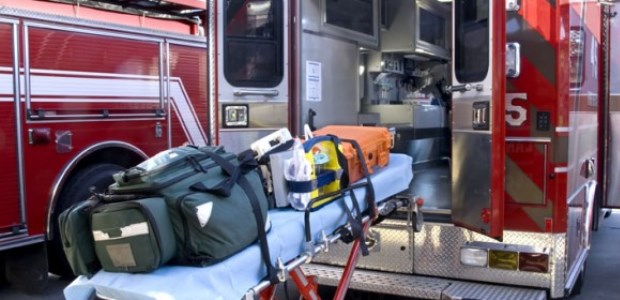
NFPA Amendment Would Update 1999 Clothing Standard
The organization's Tentative Interim Amendment would revise its Standard on Protective Clothing for Emergency Medical Operations in order to better protect first responders from the Ebola virus.
The National Fire Protection Association is seeking public comments on a Tentative Interim Amendment to NFPA 1999: Standard on Protective Clothing for Emergency Medical Operations, in order to better protect first responders from contracting the Ebola virus. NFPA has posted the TIA for public review and has set a Jan. 15, 2015, comment deadline. To submit a comment, e-mail the Secretary, Standards Council, at [email protected].
According to NFPA's announcement, this amendment "follows work conducted by several organizations and federal agencies that recognized the need for a national PPE standard to protect emergency first responders against the Ebola Virus and other liquid-borne pathogens." Those organizations include the Centers for Disease Control and Prevention, the World Health Organization, the Human and Health Services Office of the Assistant Secretary for Preparedness and Response, and the Interagency Board for Equipment Standardization and Interoperability.
The amendment would change NFPA 1999's title to Standard on Protective Clothing and Ensembles for Emergency Medical Operations and would add new sections:
- 1.1.2. This standard shall also specify additional minimum design, performance, testing, documentation, and certification as requirements for single-use and multiple-use emergency medical protective ensembles comprising the protective clothing items described in 1.1.1 for protection from airborne and liquid-borne pathogens.
- 1.2.2. The purpose of this standard shall also be to establish a minimum level of whole body protection for emergency services personnel and medical first receivers from airborne and liquid-borne pathogens.
Also, the amendment would add these as newly referenced standards in NFPA 1999 Section 2.2:
- NFPA 1951, Standard on Protective Ensembles for Technical Rescue Incidents, 2013 edition.
- NFPA 1971, Standard on Protective Ensembles for Structural Fire Fighting and Proximity Fire Fighting, 2013 edition.
- NFPA 1991, Standard on Vapor-Protective Ensembles for Hazardous Materials Emergencies, 2005 edition.
- NFPA 1992, Standard on Liquid Splash-Protective Ensembles and Clothing for Hazardous Materials Emergencies, 2012 edition.
- NFPA 1994, Standard on Protective Ensembles for First Responders to CBRN Terrorism Incidents, 2012 edition.
The amendment also would change the definition of an Emergency Medical Cleaning/Utility Glove, removing the phrases that state these multipurpose gloves are "not for emergency patient care" and "are not intended to be used as emergency medical examination gloves or emergency medical work gloves," as well as the sentence that states, "Emergency medical cleaning/utility gloves also do not provide the necessary levels of physical protection that are met by emergency medical work gloves, which are suitable for extrication and other emergency medical operations where significant physical hazards might be faced."
It would add a new definition for Single-Use Emergency Medical Protective Ensemble, stating that such ensembles "include a single-use medical protective garment that may be a coverall with or without a hood, or separate garments that can include a hood. These ensembles include two pairs of any NFPA 1999-certified single-use emergency medical examination gloves. The use of double gloving is a precaution intended to offer additional protection and minimize the risk of cross-contamination during doffing."